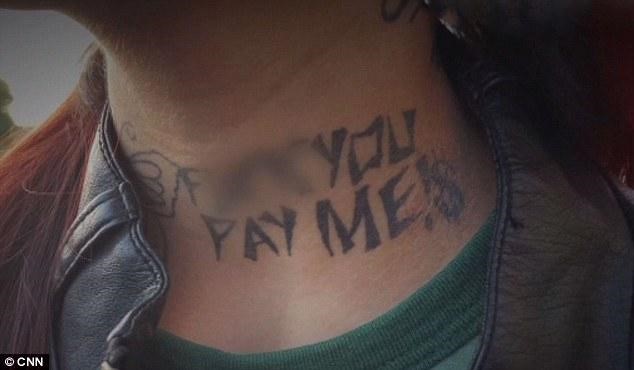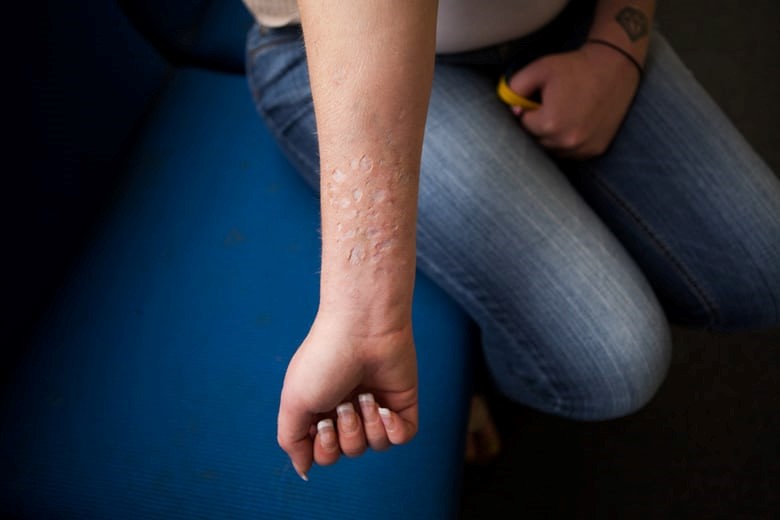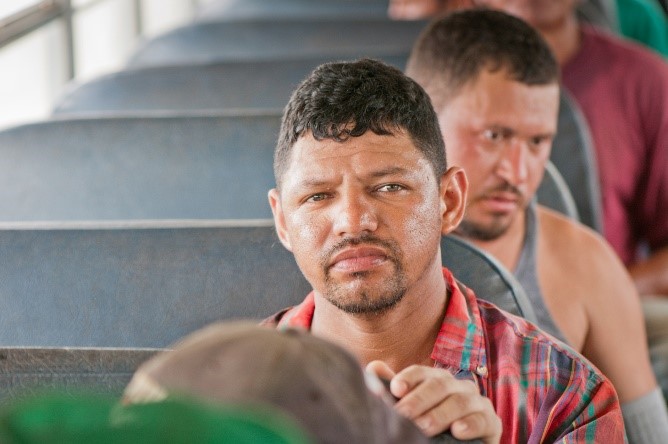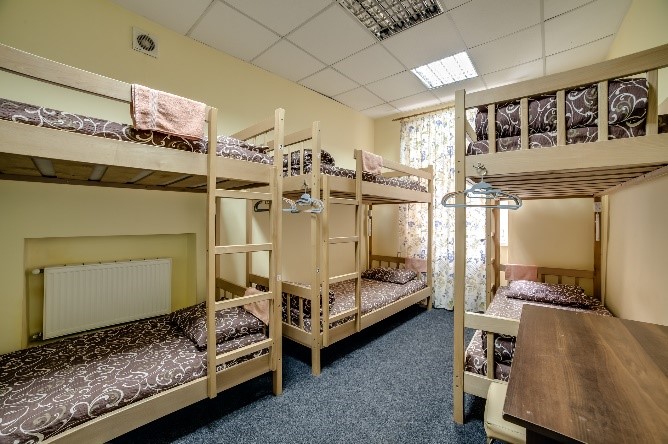1. Tattoos of names, phrases or monetary symbols (i.e., crowns, money bags, barcodes, dollar signs).
Example: CNN reported that “A” ran away when she was 13 years old. She met a pimp who promised her money and nice things, and when she turned 14, that same pimp convinced her to get his name tattooed on her chest in large letters. At first, she saw the tattoo as a sign of belonging, but then realized it was a sign of control. Tattoos are used to let other pimps know that a person is that pimp’s “property.”

Source: Sidner, S. (2017, March 14). Old mark of slavery is being used on sex trafficking victims. Retrieved October 18, 2017
2. Brands or intentional scarring in deliberate patterns
Example: The Guardian reported that “K” who is now in her 20s was intentionally scarred through cuts by her trafficker. Intentional scarring and branding are used for similar purposes as tattoos. Scars mark the victims as the property of a specific pimp.

Source: Kelly, A. (2014, November 15). Survivors Ink: tattoos of freedom – in pictures. Retrieved October 18, 2017
3. DOWNFALL OF A SEX SLAVE RING (tampabay.com)
Example: Some victims who come to the U.S. from other countries are forced into labor or sex trafficking upon their arrival. There have been cases of Latin American women who were recruited from traffickers to be brought to the U.S. to work in housekeeping or other jobs, but are then forced into prostitution. In other situations, victims brought to the U.S. might have a debt burden that is “owed” back to their trafficker and cannot leave their trafficker until that debt is paid. Traffickers may also threaten victims by saying they would report them to U.S. officials or harm their family if they did not follow their orders.

http://www.tampabay.com/news/publicsafety/crime/how-clearwater-helped-destroy-an-international-sex-slave-ring/984066" target="_blank">Source: Abel, J. (2009, March 14). How Clearwater helped destroy an international sex slave ring. Tampa Bay Times. Retrieved October 6, 2017
4. Paranoid behavior (i.e. will not allow someone to walk behind them
Example: CBS Miami reported a story about a woman who was brought to an emergency room by police officers after experiencing a sexual assault. She was anxious and reluctant to talk about the specifics of the assault, declined to be examined by a Sexual Assault Nurse, and persistently refused other assessments or interventions. She was discharged but came back to the emergency room the next day with acute suicidal ideation and opioid withdrawal. During this visit, she disclosed that she was forced to work as a prostitute at gunpoint to pay off her drug dealer.

Source: Gibbons, P., & Stoklosa, H. (2016). Original Contributions: Identification and Treatment of Human Trafficking Victims in the Emergency Department: A Case Report. Journal Of Emergency Medicine, 50715-719. doi:10.1016/j.jemermed.2016.01.004.
5. Anxiousness when talking to EMS personnel
Example: Victims of trafficking may come to the emergency room or a police station and seem nervous, anxious, tense, fearful, depressed, submissive, and/or paranoid. During those interactions, victims’ answers may seem scripted or they may change their stories several times. Victims’ paranoid behavior may stem from their fear of deportation, arrest, harm for them or their family if they speak out. Many victims have been told by their traffickers that authority figures such as EMS personnel, or police officers, will not believe or help them if they disclose their victimization.
6. Owns expensive or high-end goods, or is groomed (i.e. hair, nails) in a way which they could not afford on their own
Example: A 16-year-old female ran away from home, and her father believes that she may be a trafficking victim. Prior to her disappearance he noticed that his daughter would come home with expensive gifts and at one-point came home from school with a $200 bike.

Source: Serna, S. (2016, January 25). Father fears daughter is human trafficking victim. Retrieved October 13, 2017
7. Carrying many condoms on their person
Example: A Mexican man promised undocumented women from Mexico marriage, a job, or a better life, if they came to the U.S., but forced them into prostitution when they entered the country. The women had to carry a large number of condoms in their purses (up to 40) because that is how many people they were supposed to have sex with before returning to the trafficker.

Source: Lilley, S. (2011, April 03). Victims of the 'unimaginable' speak out. Retrieved October 13, 2017
8. Always accompanied by a third party (particularly in individuals whose first language is not English)
Example: CBS Miami reported a story about a South Florida couple who trafficked victims for cheap labor at their several businesses. The workers were not allowed to leave the country clubs or hotels without an escort. The couple stole the victims’ passports, and threatened deportation if the victims told law enforcement.

Source: CBS. (2010, December 12). Couple Sentenced For Human Trafficking. CBS Miami. Retrieved October 11, 2017
9. Mentions of living with a large number of people who are not family
Example: Kiki was brought to the U.S. from Thailand under the promise she would be given a job at a restaurant. However, she was brought to the U.S. by an Asian trafficking ring that forced her and several other women into prostitution, and required the women to pay off enormous debts for being brought to the U.S. Kiki was forced to share small bedrooms with 8 to 10 other Asian women in massage parlor brothels.

Source: Swartz, M. (2010, April). The Lost Girls. Texas Monthly. Retrieved October 20, 2017
10. Very limited knowledge of the area in which they live
Example: The Orlando Sentinel reported a sex trafficking ring of men and women from Mexico, who brought vulnerable women into the U.S. and forced them into prostitution. The sex trafficking ring was headquartered in Panama City Beach, but frequently circulated victims throughout several areas of Florida and other states, causing victims to be unfamiliar with their surroundings and feel disoriented from constant moving.

Source: Swartz, M. (2010, April). The Lost Girls. Texas Monthly. Retrieved October 20, 2017
11. Not carrying personal identification
Example: A Latin American labor subcontractor who hired mostly undocumented immigrants forced those individuals to work on farms and would use violence to threaten and intimidate the farm workers. He held onto the passports and immigration documents of the victims so he could keep them under his control.

Source: Neal, D. J. (2017, January 22). He was called a nicolero. He's going to jail as a slavemaster. Miami Herald. Retrieved October 11, 2017
12. Flight attendant us es secret message to rescue teen girl from human trafficking on Calif. flight
Example: During a flight from Honduras to Miami, a flight attendant noticed a boy between 5 and 8 years old who seemed drugged, lethargic, in pain, sweating, and had to be carried. The flight attendant began asking the accompanying adults questions about the boy. The adults’ stories did not add up, and there were other red flags. The flight attendant alerted the flight deck and authorities on the ground, was able to get the boy the help he needed.

Source: Robinson, C. (2017, February 06). Human trafficking survivor helps another victim. Retrieved October 18, 2017




